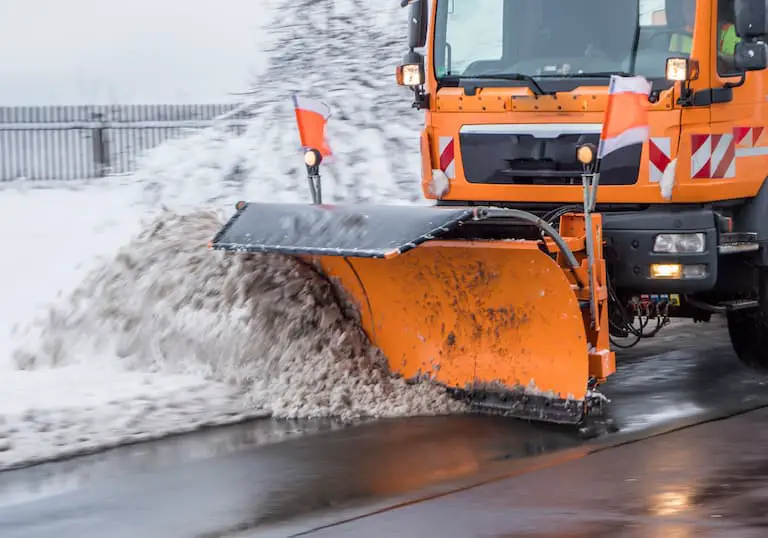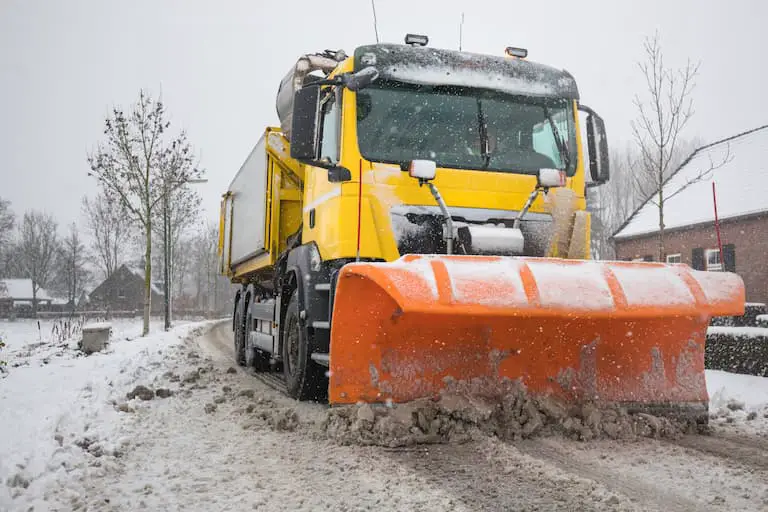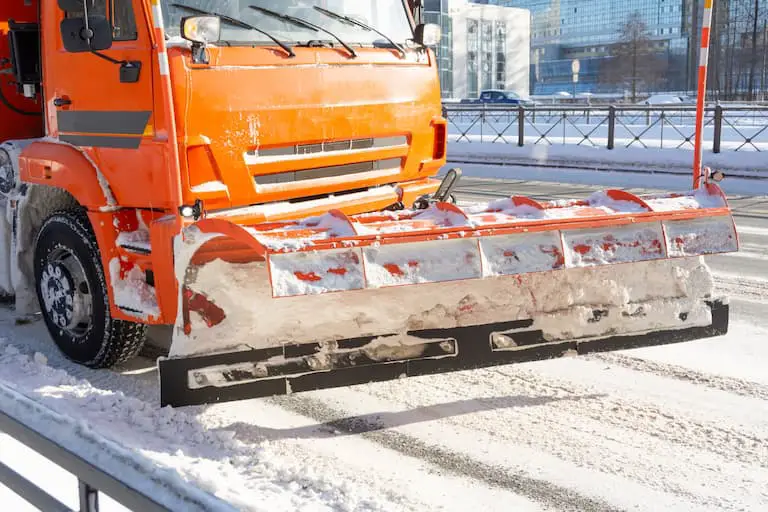As an Amazon Associate, we earn from qualifying purchases. We may also earn commissions if you purchase products from other retailers after clicking on a link from our site.
We all know how snow accumulation wreaks havoc on our driveways, sidewalks, and streets. And although snowplows are among the most effective snow removal tools, there’ve been concerns that they contribute to deteriorated infrastructure. So, do snow plows damage roads?
Snow plows can damage roads if they are used excessively. But, adequate measures can help minimize this scenario. It’s also crucial for experienced individuals to operate these snow clearing devices to maintain the integrity of roads.
In this article, I’ll discuss a few topics related to the impact of snow plowing on roads. So, read on to learn more!

Why Snowplows Damage Roads
A snow plow can damage a road if it repeatedly scraps and drags on the road surface.
Moreover, snow plowing can deteriorate the condition of a road that already has potholes, but proper use of snowplows can prevent road damage.
People living in snow-prone areas, especially in the northern climates, always have to cope with the impacts of heavy snowfall during winter. Moreover, cities usually spend a lot of money on maintaining their roads in this cold season.
For instance, it costs New York City approximately $55.3 million every year for snow removal and road maintenance.
Snow plowing is a common snow removal method in many cities and municipalities since it is less strenuous than shoveling snow. Many property owners hire snow plowing contractors to remove snow from their driveways and sidewalks since they’re experts in this activity.
But, snow plowing can have negative implications despite its efficiency.
Snowplows come in different sizes and designs, depending on how they operate. They can either have a straight or V-shaped metal blade with an angled scoop to gather and roll the snow from the road surface. So if the metal blade comes into contact with the road, the chances are high that it will cause some damage.

So, here are ways that snow blows can deteriorate the integrity of a road or pavement:
- Snowplow blades can scrap and strip off the top layer of asphalt pavements.
- Most truck-mounted snowplow blades are 12’ (3.66 m) wide and approximately 5’ (1.52 m) high. This means that their weight creates some force that could crack or damage a weak road surface.
- The heavy snowplow blades can gouge out some road sections when dragged continuously on the road.
- Obstacles under the formed snow piles, including rocks and metallic objects, can crack the asphalt on driveways when snowplows run over them. These objects also destroy the snowplow. This is why it’s recommended to clear your driveway or mark areas with irremovable objects to protect them, and the snowplows too.
Do Snow Plows Create Potholes on Roads and Driveways?
Snowplows do not create potholes in most cases. Rather, these snow-removing devices deteriorate roads that contain potholes. Also, the usage of snowplows and de-icing compounds make potholes worse.
Potholes are a nuisance to motorists and other road users, as they ruin vehicles and can cause accidents.
According to reports, drivers must spend about $300 every time they fix their cars due to pothole damage. Moreover, authorities incur hefty costs each year fixing pothole damage on roads and bridges.
Many people believe that snow plowing contributes to the formation of potholes on most roads in the United States. Others, however, blame road salt for damaging roads and driveways. But these two snow-removing methods can potentially contribute to the formation of potholes on roads.
However, creating potholes is a more complex process that occurs due to a combination of factors. For instance, the freeze-thaw cycle is the major cause of pothole formation and pavement damage.
The cycle involves the fluctuation of temperatures below and above the freezing point.
The roads are covered with snow during winter, but the snow starts melting when the temperatures slightly rise above the freezing point, which is 32°F (0°C). So, if there are any cracks on the road’s surface, water will seep through.
When the temperature drops below the freezing point, the water freezes and expands, extending the cracks.
Since the freeze-thaw cycle recurs depending on temperature variations, the expansion and contraction of water will make the cracks worse. This phenomenon will significantly weaken or deform if the pavement has weak base layers, which can gradually lead to the formation of potholes.
Now, where do snow plows and rock salt come in?
Rock salt is an effect de-icing agent. However, it is an environmental hazard since it can salinize freshwater sources and alter the growth of some organisms. Additionally, it’s corrosive and significantly destroys infrastructure. Therefore, when used excessively on snow-coated roads, rock salt can also contribute to pothole formation by lowering the freezing temperature.
But what about snow plows?
Since snowplow blades can scrap the upper road surface, they will most likely weaken cracked roads or pavements. They also extend the potholes if they’ve already formed on such roads. This means that snowplows don’t directly create potholes but only worsen the situation.

How To Prevent Snow Plows From Damaging Roads
It’s almost impossible to do away with snowplows since they help in snow removal.
However, due to their negative implications on roads, it’s crucial to prevent them from damaging roads. So all stakeholders, including individuals, property owners, and governing bodies, should develop effective measures to protect the roads from damage.
Here are ways to protect roads from damage by snowplows:
- Operate the snowplows properly: Only experienced professionals should be involved in snow plowing. They need to set the plow blades high enough not to damage the roads.
- Seal asphalt pavements: Use a combination of additives such as asphalt emulsion, coal tar, and clay to protect it from chipping or cracking. It’s advisable to do this before the onset of winter.
- Repair damaged or potholed roads during the warmer seasons. This approach will prevent excessive damage when snow plowing in winter.
- Use milder de-icing agents to minimize road corrosion.
- Remove any obstacles from your driveways or sidewalks to prevent snow plows from running over them.
Final Thoughts
Despite their effectiveness in clearing snow from our roads and pavements, snow plows can potentially cause damage to the infrastructure. Nonetheless, proper operation and preventive measures can protect the roads from damage. The governing bodies should also set aside road maintenance funds and have solid snow removal regulations.
